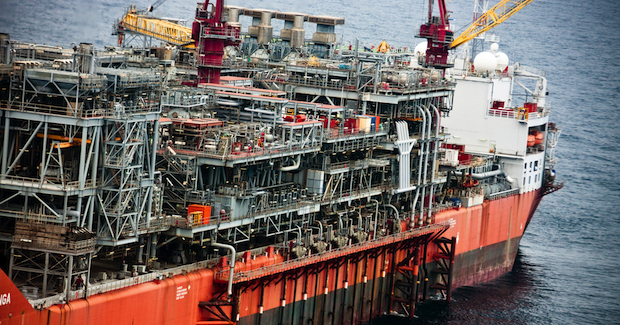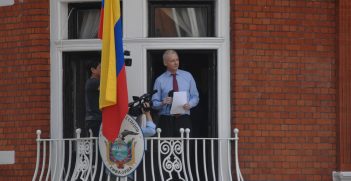Timor-Leste Plays Hardball on Greater Sunrise

For nearly two decades the bilateral relationship between Australia and Timor-Leste has been marked by disputed maritime boundary claims in the Timor Sea. Far from a solution, Dili’s recent decision to withdraw from the existing treaty is a high-risk strategy and does not bode well for the relationship.
At the heart of the current dispute is Greater Sunrise, a lucrative 5.1 trillion cubic foot gas field. Australia and Timor-Leste both claim an interest in Greater Sunrise, at one time estimated to be worth US$40 billion (AU$52.66 billion).
The 2006 Treaty on Certain Maritime Arrangements in the Timor Sea (CMATS) was designed to establish a framework for developing Greater Sunrise. However, a recent joint statement from the governments of Timor-Leste and Australia announced that Timor-Leste would officially notify Australia of its wish to terminate the CMATS.
Legal arguments
Since the 1970s, various treaty arrangements have sought to expedite petroleum revenue exploitation without prejudicing maritime boundary claims.
Australia favours principles of ‘natural prolongation’, which provides seabed territory that extends to the edge of a geomorphic continental shelf. In contrast, Timor-Leste favours a ‘median’ line, which is supported by post-UNCLOS jurisprudence. (UNCLOS is the United Nations Convention on the Law of the Sea.)
In 2002, Australia excluded the compulsory jurisdictions of the International Court of Justice and International Tribunal on Law of the Sea relating to maritime boundary delimitation. Three months later, both states signed the Timor Sea Treaty, which again deferred boundary delimitation, instead establishing a Joint Petroleum Development Area (JPDA). Timor-Leste negotiated a 90:10 revenue split in its favour, although the quid pro quo was Australia winning lucrative downstream revenues via rights to pipe the petroleum to Darwin for processing.
Australia refused to ratify the Timor Sea Treaty unless Timor-Leste agreed to ratify a unitisation of Greater Sunrise, located mostly outside of the JPDA. In the Unitisation Agreement, the states agreed that 20.1 per cent of Greater Sunrise was located in the JPDA, and 79.9 per cent within Australia’s jurisdiction.
The key boundary for establishing possession of Greater Sunrise is actually the eastern lateral. This line was originally drawn according to legal principles of simplified equidistance—this remains the basis of Australia’s interest in the field. Timor-Leste however, claims that the eastern lateral boundary that bifurcates Sunrise should shift substantially to the east, creating an ‘adjusted equidistance’.
Both Timor-Leste and Australia have arguments about the rightful placement of the eastern lateral according to relevant geographical features. Problematically, UNCLOS provides little guidance on this question beyond the requirement of equity.
After heated negotiations, CMATS was ultimately signed in 2006 by both states. It circumvented boundary claims by placing a 50-year moratorium on negotiating maritime boundaries, and put aside the issue of how the field would be developed.
While Australia has been an adamant supporter of retaining the CMATS, and avoiding permanent maritime boundary discussions, Timor-Leste became increasingly dissatisfied with the arrangements.
Dili’s goals
The CMATS was only achieved after Timor-Leste set aside its claims to downstream processing rights via an export pipeline.
Timorese representatives sought to develop an export pipeline from Sunrise to the south coast of Timor-Leste. However, in 2010 Woodside informed the ASX that a floating LNG platform was the most viable option for processing Sunrise gas. Australia supported this decision.
Nevertheless, the pipeline has remained central to Timor-Leste’s ambitious plan to establish an onshore processing plant called Tasi Mane. This development has begun despite a lack of agreement with Australia on Greater Sunrise development.
Timor-Leste has abandoned pipeline discussion and reinvigorated its pursuit of permanent boundaries, now arguing that this is “the only acceptable solution” to the dispute. This has provided the motivation for abandoning the CMATS.
A ‘fair’ settlement is now viewed as one that gives Timor-Leste control of Greater Sunrise.
Dili’s strategy
In pursuing a new policy direction, Timor-Lest has employed two key statecraft strategies: utilising international legal mechanisms and pursuing a public diplomacy campaign.
In 2016, Timor-Leste initiated compulsory conciliation under UNCLOS to engage Australia in permanent maritime boundaries negotiations. The conciliation process has forced Australia back to the negotiation table, but they cannot bypass Timor-Leste’s central problem that Australia has excluded maritime boundary dispute jurisdictions.
Timor-Leste also sought to use other international legal proceedings to pressure Australia.
In 2013, Timor-Leste instituted proceedings against Australia at an Arbitral Court under the Timor Sea Treaty to invalidate the CMATS on the grounds that Australia’s alleged spying in 2004 contravened the Treaty of Vienna. It also initiated proceedings relating to article 8(b) of the Timor Sea Treaty concerning the taxation of the petroleum exported from the JPDA.
Both of these cases have been now dumped by Timor-Leste. Timor-Leste pursued invalidation of the CMATS through international tribunals because of concerns that it would also invalidate the Timor Sea Treaty, thereby throwing remaining JPDA revenue in doubt.
But the decision to terminate the CMATS rather than wait for legal proceedings has made these cases redundant.
One of the most significant functions of the international legal cases is keeping the Timor Sea issue on the Australian media agenda. Timor-Leste’s public diplomacy campaign attempts to pressure the Australian government by leveraging a pre-existing sympathy for the Timorese nation within the public. However, the issue lacks salience in the Australian media as reports tend to be sporadic, limiting its capacity to win ‘the hearts and minds’ of the Australian public.
Has Dili’s strategy worked?
For Timor-Leste to achieve its objectives, it needs to pressure Australia into changing its approach by either; agreeing to permanent maritime boundaries that enable Timorese control over Sunrise; or submitting to third-party arbitration, in the hope that any judgement would give Greater Sunrise to Timor-Leste. Timor-Leste’s approach is high-risk given Australia’s realpolitik approach to the Timor Sea since the 1970s.
Timor-Leste’s manoeuvres have led both states back to bilateral negotiations. For Australia this is inconvenient, but not significant; it consistently advances the view that consultation and negotiation are preferable to arbitration. However, there are serious risks for Timor-Leste in terminating the CMATS.
With a falling oil price, Timor-Leste’s negotiating position is weaker than in 2006 when Timor-Leste had yet to start spending JPDA oil revenues. Revenues from the JPDA have provided approximately 90 per cent of Timor-Leste’s state budget, but the Bayu-Undan oil field will stop producing in the early 2020s. Timor Leste’s AU$16 billion sovereign wealth petroleum fund could be depleted by 2025. The more time that passes, the more urgent a resolution on Greater Sunrise becomes.
Given this economic outlook, starting back at square one with Sunrise negotiations is unlikely to provide strategic advantage to Timor-Leste.
The sticking point has always been not whether a boundary should be drawn, but where the boundary would be drawn. Forcing Australia to negotiate, and achieving a negotiated boundary are two different outcomes. It seems unlikely that Timor-Leste will be able to persuade Australia to give Timor-Leste most, if not all, of Greater Sunrise.
Attaining boundaries will instead require Timor-Leste to compromise on Greater Sunrise. But Timor-Leste’s representatives risk becoming hemmed in by their own political rhetoric as compromise may upset its domestic audience. It would also put at risk its petroleum industrialisation ambitions.
Ultimately, the high-stakes ‘all-or-nothing’ approach could undermine Timor-Leste’s future economic and political viability as its future remains dependent upon the development of Greater Sunrise.
Dr Rebecca Strating is a lecturer in politics at La Trobe University. Her research focuses primarily on Indonesia and Timor-Leste.
This article is published under a Creative Commons Licence and may be republished with attribution.




